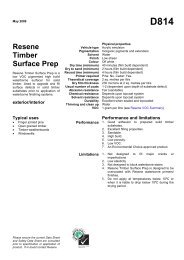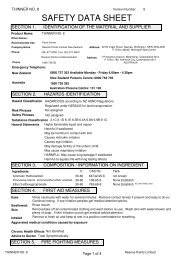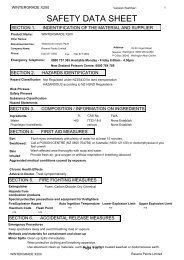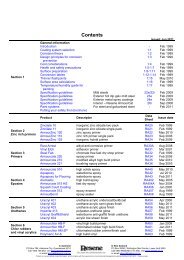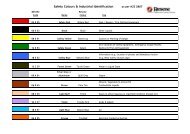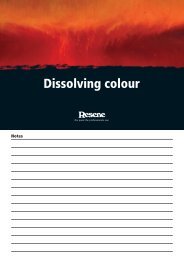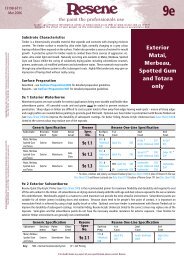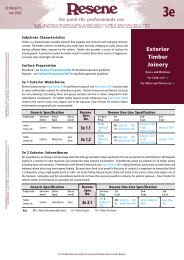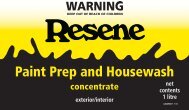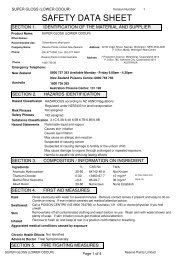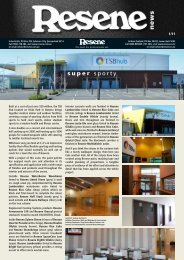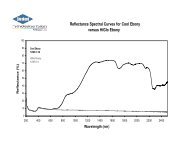Putting your safety first - Resene
Putting your safety first - Resene
Putting your safety first - Resene
- No tags were found...
You also want an ePaper? Increase the reach of your titles
YUMPU automatically turns print PDFs into web optimized ePapers that Google loves.
Respirators and breathing apparatusIt is not possible to set out precise requirementsfor every industrial situation where there is aninhalation hazard because the factors that haveto be considered vary from one workplace toanother. Both the user and the supplier should besatisfied that the equipment selected is adequatefor the conditions. If in doubt, you should seektechnical advice from <strong>your</strong> equipment supplier or<strong>your</strong> local branch of the Occupational Safety andHealth Service of the Department of Labour (OSH).Respirators protect against the following hazards:1. DustsRespirator protection is required for differentcategories of dust:Nuisance dusts: These may cause discomfort(i.e. cough or phlegm) or minor irritation ofthe nose and lungs but are usually not toxicand do not permanently damage the lungs.They pass out of the body or remain in thelungs without poisoning the system. Examplesare calcium carbonate (limestone dust), starchand sucrose.Lung-damaging dusts: Respirable particlesof these dusts remain in the lungs where theymay damage the tissue. For example, asbestos,crystalline silica (quartz dust) and coal dust.Irritant particles: Chemically activeparticulates that cause immediate discomfort,irritating or inflaming the airways to the lungs.Examples are acid or alkaline mists andcement dust.Toxic dusts: These pass from the lungs intothe blood and may poison the whole body.For example, lead, arsenic and powderedorganophosphate pesticides.Sensitising agents: Particulates in lowconcentration that may cause an allergicreaction. An example is mould.2. Mists and aerosolsThese are fine droplets of liquid dispersed inthe air and may contain particles of dissolvedsubstances. Mists are produced bycondensation of a vapour or by atomisationof a liquid. Examples are paint spray andchromic acid mist from an electroplating bath.3. Metallic fumesThese are fine particles of metal, produced bycondensation of the vapour, given off by ametal when it is subjected to hightemperatures, for example, during weldingand smelting.NOTE: Inhaled particles deposited in the mucusin the respiratory airways will enter the bodywhen swallowed.4. Gaseous or vapour contaminantsThere are three categories of gases andvapours for which different types of respiratoryprotection is required:• Acid gases, such as hydrogen chloride andsulphur dioxide.• Alkaline gases, such as ammonia anddiethylamine.• Organic vapours, such as solvents.12




